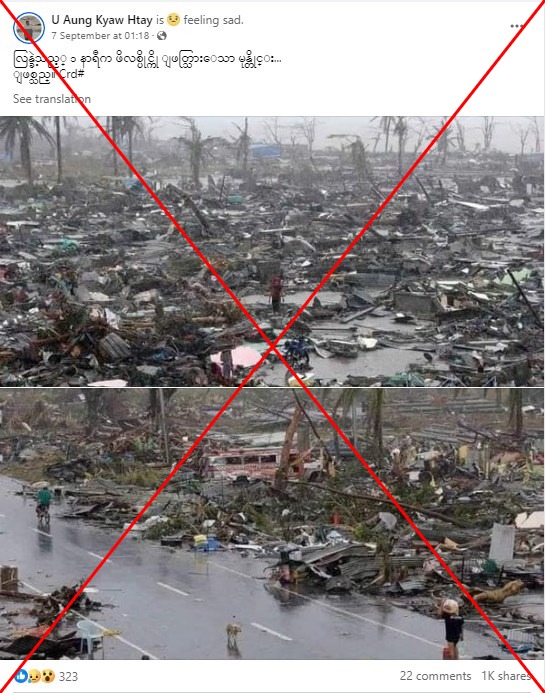The photos emerged on the same day that Typhoon Yagi hit Vietnam, after killing two dozen people in southern China and the Philippines earlier that week (archived link).
The storm then wreaked havoc across Southeast Asia, causing deadly landslides and flooding of major rivers.
The worst hit Vietnam has the death toll The death toll has risen to 197, with eight deaths confirmed in northern Thailand, where one district is suffering its worst flooding in 80 years (archived link).
The same series of photos was linked on Facebook to the impact of Typhoon Yagi here, here And here.
But the photos show the aftermath of a super typhoon that hit the Philippines in 2013.
Super Typhoon Haiyan
A reverse Google search of the first photo revealed that it published by Reuters on November 13, 2013 in a photo series titled “Tacloban in Ruins” (archived link).
The caption of the photo reads: “People stand among the rubble and ruins of houses destroyed after Super Typhoon Haiyan hit the city of Tacloban in the central Philippines on November 10, 2013.”
Below is a screenshot of the photo of the fake post (left) and the Reuters photo (right):
Super Typhoon Haiyan made landfall in the central Philippines on November 8, 2013, leaving more than 7,000 dead and missing, while millions of people in the region lost their homes as the superstorm wiped out entire communities (archived link).
AFP has previously debunked false reports on social media linking the photo to a tropical storm that hit Myanmar in 2022.
A reverse search of the second photo, which shows people walking along a street with rubble on either side, found that the published by the Associated Press on November 10, 2013, also in the aftermath of Typhoon Haiyan (archived link).
According to the caption, the photo was taken on November 10, 2013 in the city of Tacloban in the central Philippines, where residents complained of food and water shortages and no electricity after Typhoon Haiyan struck.
Below is a screenshot of the photo of the fake post (left) and the AP photo (right):
AFP has debunked other reports linking old footage to Typhoon Yagi here.







